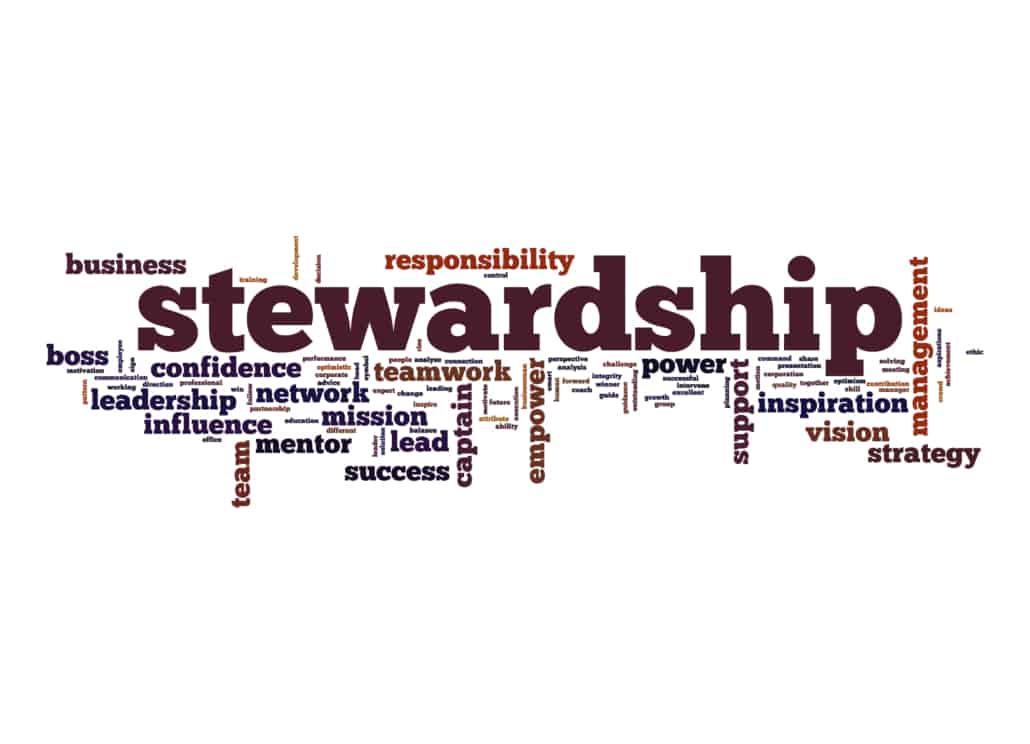Posts
More Options to Consider Nowadays
When it comes to preserving family wealth over generations, one of the biggest bogeymen out there is entitlement, and for decades now that’s what’s been keeping families up at night, and keeping many of their advisors busy trying to prevent.
Most of what I write about here concerns the challenges families face when trying to transition their hard-earned wealth from one generation to the next, and I almost always tie in parts about how the industry that serves these families is continuing to evolve.
This week we’re going to look at the concept of stewardship, which has often been hailed as the antidote to entitlement.
As this ecosystem matures, we’re coming to terms with the fact that while having rising generation family members adopt a posture as stewards is preferable to them being entitled, it may not be the “be all and end all” that some have held it out to be.
Better Than the Opposite, But Too Passive
I covered this briefly in The Many ‘Ships of Working with Family, where I added stewardship to leadership and partnership, among others.
Here’s some important background I’m recycling for context:
Definitions of stewardship include words like “supervising” and “taking care of” something, and often include adjectives like “responsible” and “careful”.
Clearly someone who wants to “take care” of wealth in a responsible fashion is preferable to someone who feels entitled to squander it.
It may not, however, be an enduring solution, depending on how much wealth there is, how quickly it can be expected to grow, and how large a crowd of family members it’s expected to serve long term.
Entrepreneurs in Each Generation
Some prominent members of the field of family enterprise have long held that it’s important for each generation of a family to renew itself with a new crop of entrepreneurs to keep things going and growing, as the family continues to expand.
In many ways, setting up the expectation that those who follow the wealth creator are simply supposed to maintain the wealth doesn’t always dovetail nicely with the idea of taking the initiative necessary to recreate something new.
I’m reminded of Jay Hughes’ view that those who follow the wealth creator risk getting sucked into that person’s “black hole”, which can exert a strong pull, from which it can be difficult to break away.
The Wealth 3.0 Version – Pushback?
During a recent Purposeful Planning Institute webinar on the subject of Wealth 3.0, we spent some time discussing how stewardship fits into that topic.
A participant asked the panelists about how the concept of stewardship might look a bit different from a Wealth 3.0 lens, which provoked a certain amount of unexpected (yet welcome) discussion.
Interesting points were raised about whether stewardship becomes a good outcome for a family, versus the idea of someone becoming a steward as more of a “job description”.
There was also talk about how while stewardship had been put on a pedestal until recently, there’s been more pushback lately, as families are looking at their wealth transitions more holistically and less as a “top down” venture, i.e. “thou shalt steward my wealth”.
I’m realizing that the concluding sentence of one of my blogs from less than a year ago, Finding the Liquidity Sweet Spot for Your Family may already be out of date.
That post ended with “I recommend they also become involved in co-creating their future as stewards of the family wealth.” which in the context of that piece remains valid, but I might phrase it differently today.
The “Three Orientations” Viewpoint
The views on this question continue to evolve, of course, and a recent whitepaper from Merrill Private Wealth Management underscores an advanced way of looking at this question. See Inheritance Style Whitepaper
That piece notes that there are three different orientations that wealth inheritors can and do adopt, based on Merrill’s research.
In addition to traditional Inheritors (who may be entitled) and Stewards, they introduce the concept of Sojourners to the mix as well.
It may take some time for these ideas to crystalize in the family wealth transition ecosystem, but it’s clear to me that change and evolution to this question is afoot.
While stewardship can be an important part of the wealth continuity plans of many families, for a certain period of time (which might be measured in decades or even generations), it will rarely be a question of “set it and forget it” either.
Learning from Others from Around the World
Some people are lifelong learners and never stop searching for ways to improve what they do, and I don’t think there’s ever been a better time to be one of these people.
I certainly consider myself to be among them.
I’ve just returned from one of the events I love to be a part of whenever possible, mostly because it’s a gathering of like-minded people who live and work in the family enterprise space as I do.
I’m talking about the Tenth Annual Schlesinger Global Family Enterprise Case Competition (SG-FECC) at the University of Vermont.
I’ll Be the Judge of That
I can’t believe that I first participated as a judge way back in 2014, but I wrote a blog about it, so I’ve got proof! See The World’s Only Family Business Case Competition
It’s an honour and a privilege to be invited back again and again, and the bonus for me is that it’s only an hour and a half away by car.
Contrast that with some of the other judges I spent time with over the past few days, who flew in from France, Gautemala, Arizona and Louisiana.
The 19 teams competing this year represented 12 different countries on 4 continents, which always impresses me.
Recall that this takes place in January, in Burlington Vermont.
Academics, Professionals, & FamBiz People
One of the coolest aspects of the event is that the judging panels are always composed of a mix of academics, practitioners like me, and real life people who are part of family businesses.
I love spending time with people who are part of this world but who play very different roles than I do, and that’s what makes this event so enriching for me.
After each team presents their recommendations based on the case facts, a Q & A period follows, which can often become a “make or break” moment for the team of students.
Thanks to the varied composition of the judging panels, the types of questions we fired at the teams were always focused on different aspects of each presentation.
Pent-Up Demand for Being Together in Person Again
As I noted in From Multi-Disciplinary Field to Interdisciplinary Ecosystem, there was also a warm buzz at the event thanks to the fact that we were all together once again.
This event, like many others, continued on despite Covid and the restrictions from being together over the past few years.
While everyone did their best to make those events as good as they could be while being done remotely, there really is no substitute for occupying the same room together.
At the same time, though, the past few years have shown us all just how much can still be accomplished via virtual get-togethers.
Family Businesses Are Common Around the World
With students, coaches and judges from around the world, we were reminded just how prevalent family businesses are, all around the world.
In fact, in some countries that we might label as emerging markets, they’re even more common than in North America.
Different countries means the cultures for FamBiz might have a different feel and flavour, but I love the fact that we can always learn from someone else’s situation.
A Worldwide Family Enterprise Community
The cases used on the days I judged featured family businesses that had already transitioned a couple of generations, and such examples can usually be used as a model for us to learn from.
The family business community continues to grow and solidify, with events like this and organizations like the Family Firm Institute creating opportunities for us all to come together and share what actually works for families.
Typically, small firms learn from larger ones, and new ones learn from older ones, but very much like mentoring it can also work the other way around.
The key is an open-minded attitude and a willingness to learn.
I appreciate all of this and my place in this great community, and every year when I leave this event I have great hope for the future.
The young people who compete at GS-FECC each year always impress me. I’m usually a bit jealous that all of this did not yet exist when I was in university.
Kudos to the whole UVM team!
And the Winners Are….
The team from Wilfrid-Laurier University took home the Undergraduate Division, while the University of Manitoba won the prize for the Graduate Division.
I hope to return for the 2024 edition, to see what else I can learn.
The Many ‘Ships of Working with Family
Lots of Ways to Look at Managing Assets Together
The inspirations for these weekly missives come from a variety of sources, because writing 52 blogs every year necessitates a wide universe of catalysts.
Some members of my family have accused me of having an “addiction” to Twitter, and I suppose that sometimes it might seem that way, although I believe it’s very much under control (spoken like a true addict, I acknowledge).
And so you might have already guessed that Twitter is the source for the idea behind this week’s post.
Hat tip to Ryan Foland, who tweeted out a post a few month’s back that caught my attention, which stated “PartnerSHIPS are delicate, navigate wisely”, along with a cartoonish image of a captain at the wheel of a boat.
I emailed his tweet to myself, adding “relationships and leadership” to cement the idea for this piece, and put it into my “blog ideas” folder.
Since my “beat” is families who own and manage assets together, I want to explore those “ships” along with a couple of others I since added to the pile.
OwnerSHIP
The simplest one to start with is ownership, since it is the fact that people actually own something together sits at the root of the challenges that they face, as well as the opportunities.
It’s much simpler when you own something all by yourself, since you alone can make every necessary decision without even informing anyone else.
The families I work with all own things together, or there is a strong intention for them to co-own assets together in the future.
It’s this “co-ownership” that holds most of the challenges.
PartnerSHIP
That co-ownership brings us to the next ship, which is the partnership. Every partnership has its own advantages and disadvantages, of course, and being a partner in anything with family members just adds to the excitement, for lack of a better word.
When I speak about the work I do, I often make an analogy to leverage used in investing; if you borrow money so that you can make a larger investment, you can make more money, provided of course that you do make money. If you lose money, you also lose more money.
Being in any partnership with family members is wonderful when things go well, but when they go poorly, there’s more a stake to lose as well.
LeaderSHIP
In order for any ownership partnership to go well, some form of strong leadership is also required.
I used the term “some form” on purpose there, to highlight the fact that leadership doesn’t always look the same, especially in the case of families.
As a family goes from the first generation (G1) to the second (G2), there’s typically a shift from an autocratic style to something more democratic.
Ideally, there’s strong leadership of the business aspects, keeping that area strong, as well as some strong leaders of the family as well.
Those roles often reside in the same person in G1, but by G2, and certainly if they get to G3, more than one person will play key leadership roles, even if they’re not “official”.
See The Unsung Role of Family Champions
StewardSHIP
One type of leadership attitude and style that’s sometimes adopted is stewardship. Definitions of stewardship include words like “supervising” and “taking care of” something, and often include adjectives like “responsible” and “careful”.
There are worse attitudes a family can take, and stewardship continues to be a style to which many families aspire.
It does have its drawbacks as well though, such as how it can leave rising generation family members unfulfilled and can see family assets dissipate over time.
See Striving for the “All and Nothing” Inheritance
RelationSHIP
I saved relationship for last because I think of this one a bit differently. This one sort of serves as the foundation for all of the others in my mind, because if relationships between family members start to go sour, all of the other “ships” suffer as a result.
Relationships are precious and need to be tended to consciously, because their quality affects everything else the family does together.
Communication is so important and I always lean towards more communication than less, because a vacuum of communication typically causes more issues and harms more relationships than when there’s plenty of it.
All these SHIPS are delicate, so please navigate wisely!
Some Useful Parenting Advice
Every so often, I’m lucky enough to hear a great pearl of wisdom and manage to jot it down, and it turns into a perfect title for a blog post.
This one came from a presentation I attended at the recent FFI conference in Boston.
Many of the blogs I write are of course based upon the wisdom of others, and I think I do a pretty good job of sharing the credit when it’s due, at least when it makes sense for me to do so.
Let’s jump into the details so that we can then unpack this subject a bit more, as it relates to family wealth and its eventual transition.
Emerging Adults Don’t Always Launch as Desired
The presentation in question was a breakout session entitled “Emerging Adults: Moving forth the family firm”.
It included three presenters who shared ideas and strategies around helping families get positive results for their family businesses by ensuring that their rising generation members were well prepared for what is expected of them.
One of the presenters, Diana Clark of the O’Connor Professional Group, provided my money quote, towards the end of the discussion.
As someone who has worked in the field of addictions for decades, she had a warning for all parents.
“Don’t make having “happy” kids your main goal; make sure it’s a by-product”, she said. “Otherwise”, she continued, “they’ll end up coming to see me.”
What’s Wrong with Being Happy?
To be clear, she was not saying that having happy children was not something to strive for.
She was, however, providing a warning that I think all parents should heed, i.e. Don’t make their happiness the primary focus.
The familiar refrain we’ve all heard (and likely even said), “I just want my children to be happy”, can lead to many undesirable consequences.
I touched on part of this way back in 2015, in the post “Over-Parenting: Worse than Neglect?”
What I had labelled “over-parenting” back then included some examples of not allowing children to struggle for themselves, which has as its root a desire to keep them “happy”.
What I think Clark was getting at is that making your children’s happiness the main focus is actually kind of a cop out.
From Dependent to Independent
When you reflect on the roles that parents are expected to play, I’m not even sure if happiness is supposed to be near the top of the list.
To me it is much more of a recent phenomenon, a far cry from the “children should be seen and not heard” that was popular not too many decades ago.
I’ve been a parent for over twenty years now, and it is definitely a work-in-progress.
Also, times have continued to evolve, and it’s often difficult to swim against the current when you live in a society of instant gratification.
I’ve always felt that one of the primary parental responsibilities is to make sure that our offspring progress from a state of dependence upon their parents to a state of independence from them.
What a child needs a parent to do for them at the age of 5 is different from what they need at 10, and at 15, and at 20 and 25.
From Independent to Interdependent
When dealing with the families I work with professionally, those who’ve built up a significant asset base, that they hope to transition to the next generation of their family, making sure their offspring are independent is only the beginning.
I urge these families to work towards a state of interdependence, because that’s what is necessary to increase the likelihood of success.
I believe that Clark would agree that trying to make sure that those who succeed us become independent, and capable of functioning as adults in every way, is way more important than making sure that they’re happy all the time.
In fact, when parents succeed at this, their children will more likely be happy, as a by-product, as she suggested.
A Tale as Old as Time
This can get quite complex, and the struggle to get it right is a story that’s been around forever.
Getting parenting right is tricky, especially when you can do everything for your kids. It’s hard to say “No”.
But having them never require addiction treatment is probably something we can all agree is a good thing.
Best of luck (that helps too!)
Finding a Reason for Organized Family Discussions
Every week here I tackle a subject relating to families who either work together or own assets together.
The main thrust typically involves the challenges these families face in organizing themselves in ways that increase the likelihood that they’ll be able to keep a great thing going right through the next generational transition of the family.
That often means I talk about the importance of having regular family meetings and beginning to institute some forms of family governance, which is often a tough swallow for some families.
For certain families, there’s kind of a nice “back door” to this that presents itself, and that’s family philanthropy.
A Subject That’s Long Overdue Here
I’m almost embarrassed that I’ve written so little about philanthropic activities in this space, because family enterprises are often quite generous, especially in their local communities.
When I got into this field, the ideas I had around philanthropy were quite simplistic, eg. Companies makes money, so they give some of it back, that seems logical.
It was only later, when I noted that some families had found it necessary to organize their activities on a more formal basis to actually implement everything required to properly execute their giving, that I realized the wonderful side effect this can have.
The Family Governance Angle
Regular readers recognize that we are now venturing into familiar territory, i.e. family governance.
I typically lament the fact that most families seem almost allergic to the idea of implementing any form of governance, and I fully understand their reluctance.
In my first book, SHIFT your Family Business, there’s even a chapter called “Governance, Ugh!”
So one day it finally clicked, philanthropy offers some families a wonderful onramp to this world, because family giving, done right, actually necessitates many of the steps required for other types of family enterprise governance.
Philanthropy Experts Abound
The professional circles in which I travel and connect also contain philanthropy experts on a regular basis, and it is amazing how much we have in common.
On the podcast that I often host for Family Enterprise Canada, Let’s Talk Family Enterprise, I once did an episode with a colleague, Dr. Sharilyn Hale, called How Philanthropy Can Support Both Family Governance and Legacy.
Yet it still never clicked that I needed to share this idea with my blog readers. Like I said, this is long overdue.
In the organisations I belong to, including the Family Firm Institute (FFI) and the Purposeful Planning Institute (PPI), I regularly interact with professionals who work with families to support their philanthropic activities.
I guess I’m starting to realize how much we have in common.
When There’s No Operating Business (Anymore?)
One way this situation suddenly appears is right after a liquidity event, when the family realizes that now that they no longer own and operate a business together, many things are different.
See Huge Liquidity Events – Great News, Right?
Yes, they now have much more liquid wealth to handle and organize, but they’ve lost that common asset that they used to rally around and identify with, likely much more than they ever realized at the time.
How do you get a family excited about rallying around a pile of money?
Well, one answer, one that seems to be gaining in popularity, is very much centered around philanthropy.
It takes work and intention to do this well, especially if the family leaders have realized that doing this in a way that will last beyond their own lifetime, they will need to do this as a family, and not just by one or two people.
Building a Strong Foundation
Whether the specific vehicle(s) the family chooses to use include a family foundation or not, it will be important for every family to build a strong (figurative) foundation upon which they want to structure the family’s giving.
That important work includes defining the family’s values, which needs to be done pretty early on. Likewise, co-creating a vision and mission can also be important pillars that can help strengthen a coherent effort that all family members can get behind, and possibly also be involved in executing.
This will involve figuring out how they are going to communicate and make decisions together, as well as solve problems as they arise.
And as regular readers will recognize, I just laid out the key elements of family governance, right there in that last sentence.
Indeed, philanthropy offers many benefits for the family, not just for society!
It’s All Interconnected and It Never Really Ends
Every week in this space I tackle an issue related to the challenges families face when trying to ensure that the wealth or business they own will be successfully transitioned to the following generations of their family.
I’ve been doing this for a decade, and have yet to exhaust the topics on which I enjoy sharing my thoughts.
Sometimes the subjects are narrow, as they’ve been recently (see Should I Join My Family Business and Getting your MBA to Lead your Family Business: 5 Things to Consider), and other times, like this week, they’re reallllllllllly broad.
I’m not sure how to narrow my thoughts down into one post, but I’ll give it a shot.
Complex Subjects, with Lots of Moving Parts
Wealth transitions affect people from different generations of every family, and often deal with ownership and control going from a small group of people to a larger one.
Each person brings their own desires, needs, and expectations, making this work fraught with potential conflicting views and ideas.
There’s no “one-size-fits-all” method, although many professional experts in a particular subset of the field may try to make you believe otherwise.
I’ve recently been involved in a few different discussions and activities that made me realize how much of this work defies a linear approach, and is in fact very iterative and cyclical.
Few circumstances in this world lend themselves to a simple “do A, then B, then C, then D, and you’re done”.
Instead, when you get to C, you may realize that some elements of A need to be revisited, and the work done in B may now be irrelevant.
And This Is All a Good Thing
Lest readers begin to think that I believe that this is bad, well, NO, it actually has to be this way, assuming of course, that you want it to work.
Indeed, oftentimes experts have “shoved” their A-B-C-D process onto an unsuspecting family, which makes everyone happy and relieved in the short term, only to see most of it unravel once the family needs to actually live with the result.
With complex issues that involve so many parties, it is not realistic to think that a couple of people will be able to come up with the ideal plan for all right off the bat.
And even if you could, all those affected by it would not feel any ownership in it because they were not involved (or even heard) during its creation.
Planning and Governance Must Evolve Over Time
Whether we’re talking about structural elements of planning for which you involve experts in law, trusts, and taxes, or the family dynamics aspects that lead to what I call family governance, the same holds true.
You need to start by trying to figure out what you want, then you need to have discussions about it with those who will be affected by it, then you need to speak with experts and get their input.
Then you go around again, taking what you learned from the experts and sharing it with those who will be affected by the decisions.
After getting their input, you can go back to the experts again with plan 1.1 or 2.0, and get advice again.
And then repeat.
Even when you have something that works and that all agree on, that will only serve for a certain time (although it could be for years) until circumstances have changed and a new, refreshed, and better suite plan will be needed.
Regular Dialogue Where These Subjects Are Safe
Back in 2020, in How to ACE your FamBiz Succession Planning, we looked at how Alignment, Clarity, and Engagement are important elements to keep in mind.
I could have added that making sure your family has a regular forum where dialogue around these subjects is allowed, expected, and safe, is also a key success factor.
We’re talking about important subjects that deeply affect the lives of every family member, so if you’re trying to do the best job you can for all of those people, you need to have them involved, and do it in a positive and intentional manner.
Did Anyone Say This Was Supposed to Be Easy?
I know that the desire for an end point or “destination” is very strong, and nobody can “argue with” that.
But, assuming that you really want to prepare everyone and everything as best you can, then you really need to think about all of this as being more of a journey instead.
Try to enjoy this journey, even though it will not always be easy.
A New Season Is Upon Us, So…
As another season of Canada’s favourite sport begins, it feels like a good time to share some analogies from the world of hockey, that happen to fit nicely with some of my views on the subject of family wealth, and how best to prepare to transition it to future generations.
As a lifelong Montrealer, who was spoiled to be alive for 10 Stanley Cup wins by our beloved Canadiens before I finished High School, hockey holds a special place in my life, and my heart.
Although “Les Glorieux” are approaching three decades of drought, hope springs eternal, although probably not for another couple of seasons, as a roster rebuild is now on.
Our new coach recently said something during a press conference which got me thinking about some hockey analogies to write about here.
Offence Versus Defence
There’s a very simple one we can kick around a bit, about the importance of both offence and defence for a winning team.
If you have lots of scorers and lousy goaltending, you can try to win every game 8-7, but that’s not sustainable.
If you have the best goalie but can’t score, you need to try for a 0-0 tie and hope for the best in overtime.
My wealth analogy includes the risks involved in trying to make lots of money (score goals) versus making sure you don’t lose too much money (defence and goaltending).
Most families that achieve lots of wealth did so by playing exceptional offence for some time, and then need to focus on defence, since that game is played over decades and generations, not three 20-minute periods.
The asset allocation angle version might be the saying, “nobody ever got rich investing in bonds, but lots of people stay rich that way”.
Wayne Gretzky’s Famous Quote
We should also look at the most famous quote from one of the greatest players to ever lace up a pair of skates, Wayne Gretzky:
“Skate to where the puck is going, not where it has been.”
Indeed, we need to always be looking forward, not backwards, as we think about the wealth the family now owns, and how we plan to transition that wealth into the future.
The thing about intergenerational wealth, though, is that it is INTER generational.
That implies that the people in the current leading generation, who likely control that wealth, won’t be around forever, and so it behooves those folks to look to where not only the puck is going to be, but where the other players on the team will be.
The Guys Without the Puck
The Canadiens had their worst season in decades last year, and fired their coach midstream. Then, they turned heads by hiring someone who’d only ever coached his teenaged kids’ teams.
The team showed new life as he brought a fresh philosophy to the group, and he was then signed to a new long-term contract.
As the team prepared for the new season, during one of his many press conferences, he noted:
“I don’t coach the guy with the puck.
I coach the four guys without the puck.
The guy with the puck is the present.
The other four guys are the future.”
– Martin St. Louis
They Are All On the Team NOW
The team has lots of young players, who are playing alongside more experienced pros, but they’re all on the team now, sharing the ice together.
Yes, there’s a farm team too, preparing some future players who aren’t yet ready, but the “four guys without the puck” are all being coached to play well together now.
Too many families spend too much time concentrating on the guy with the puck, hoping he’ll continue to maintain his scoring prowess forever.
It’s a Team Sport
Working to transition your family’s wealth from one generation to the next is the ultimate team sport.
Coaching the ones who don’t yet have the puck is key, as is having the one with the puck understand that winning the game will involve passing the puck to others.
Learning to play well together is also a big part of success too.
Often the wealth creator had early success in an individual sport more like golf or tennis, where success as a “solo artist” is the major success factor.
Once you bring the family in, get inspired by team examples instead.
A Road Well Travelled.
The idea of going to do your MBA in order to then come back and work in (and possibly lead) your family business has been around for a long time.
It has been repeated often with varying degrees of success over the past few decades, in many places, and probably in every industry, somewhere on the planet.
It can be the perfect next step to give an aspiring leader the extra tools, confidence, and respect from fellow employees that they’ll need to take that next step in moving up the ranks and eventually taking over.
And sometimes, well, not so much.
This week I want to look at 5 things that you should consider before taking that leap.
Learning and Growth, or Just the Letters, Please
Whenever anyone is making a big decision, like going back to school for an advanced degree in anything, I always encourage them to think the decision through, and especially make sure that they’re doing it for the right reason.
If all you really want are the letters “MBA” after your name, that probably won’t be enough to sustain you on your journey.
If, however, you are looking to learn and grow as a person and as a leader, then your chances of success, during your studies and long after, will rise markedly.
But please be honest with yourself during this reflection.
Is This the Missing Link?
Even if you do realize that you need some more learning and growth in order to increase your chances of success, is the MBA route truly what’s missing for you to advance to where you want to get?
In many cases the answer is still YES, but there are lots of other educational opportunities that may be more suitable to you, depending on what strengths and education you already have, what industry you are in, and what type of role you hope to grow into.
What Role Likely Awaits You?
And that brings us to the role you are looking to occupy.
Since we are looking very long term here, you need to think about not only the next role you hope to grow into, but also any subsequent ones.
You may see roles that interest you now, and it may seem clear that they seem tailor-made for you (and you may be right).
But please, before making a big decision like going back to school, make sure that you have a number of discussions with other family members who are above you in the business hierarchy before you make any commitments.
Podunk State Vs. Harvard/Stanford/Wharton
Assuming you’ve thought through it all, discussed it with all important stakeholders, and are ready to take the leap. You need to figure out where to set your sights.
There’s a huge variability in the quality of the programs out there, their cost, their ease of qualifying, and time commitment and distance.
Assuming that you could qualify everywhere and cost is no object, it may well be worth reaching for the top schools for a better quality experience, as well as interacting with a higher level of other students.
That may not be realistic in most cases, so a detailed evaluation of schools and programs is worth the effort, which in this day and age is so much easier than it was decades ago, thanks to the web and Google.
There are even a number of schools that have specific offerings for those coming from family businesses, which didn’t exist when I was beginning this journey in the ‘80’s.
Build Your Network Too
I alluded to this above when noting the “higher level of other students” but no matter where you might end up, do not neglect the opportunity to create a network, not just of friends but of future colleagues on whom you can lean when you will need them.
Schools that emphasize family business education may be preferable for just that reason, as you are more likely to meet and get close to others whose career situation will better resemble yours, and with whom continued contact may be mutually beneficial.
Aren’t MBA’s “a Dime a Dozen”?
Doing my MBA was a rewarding experience for me, even though we sold our family business soon after my return.
These days, there are many MBA’s out there, and the experience can still offer a lot.
But think it through before committing.







